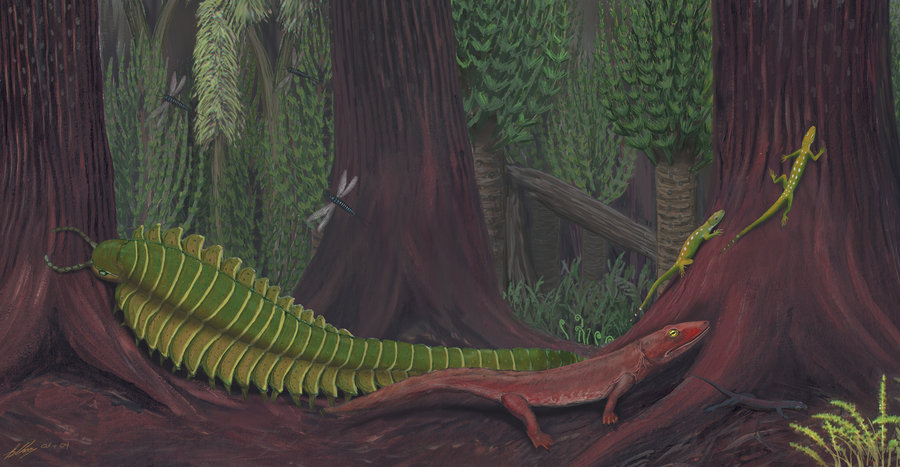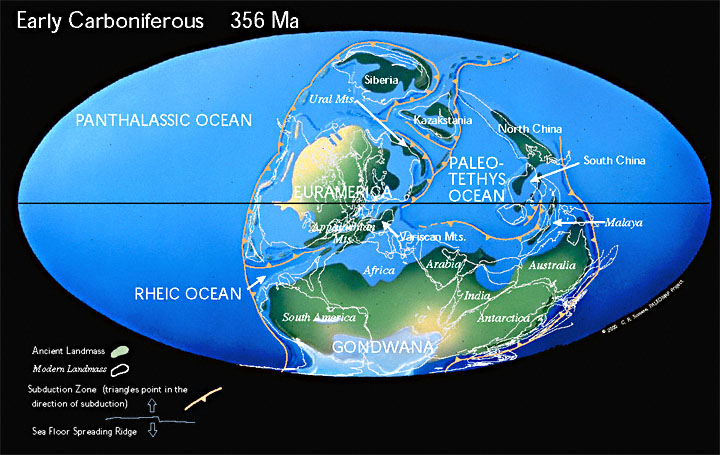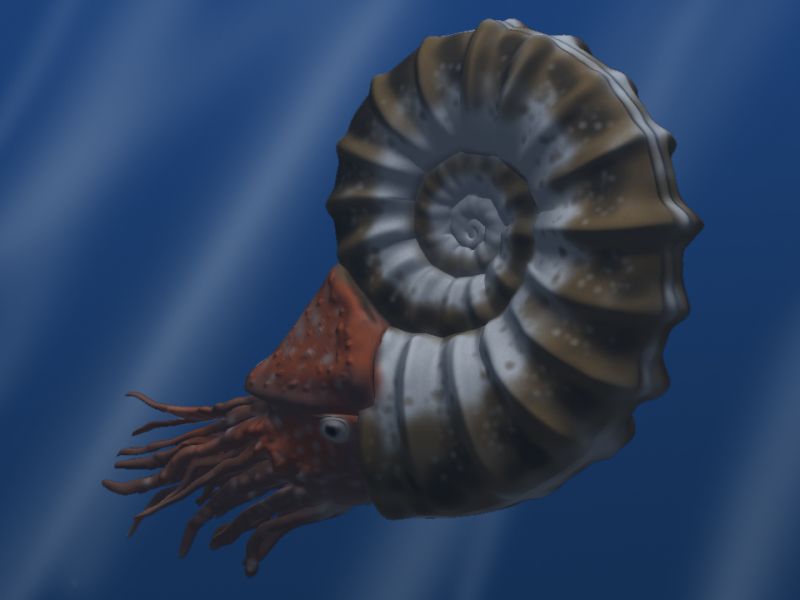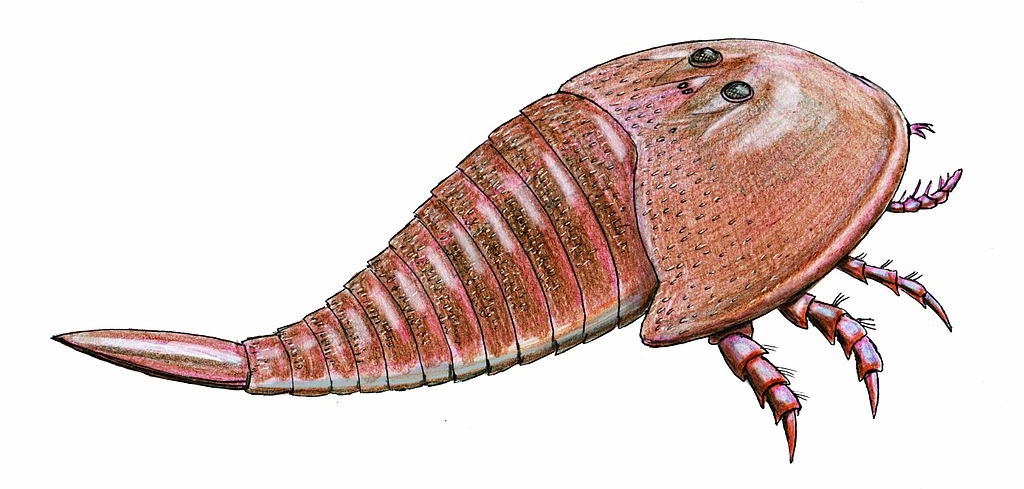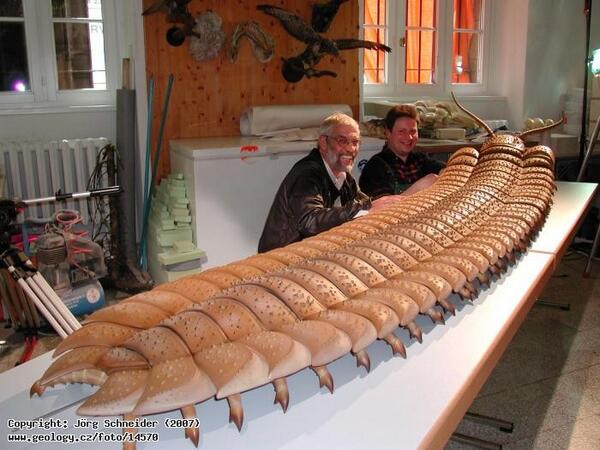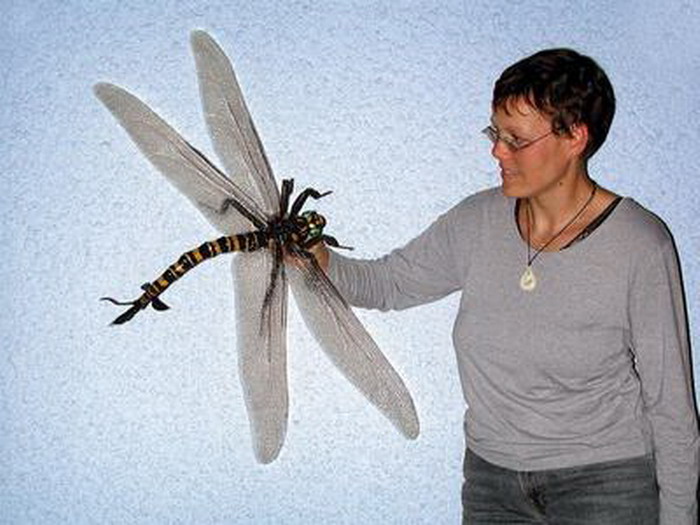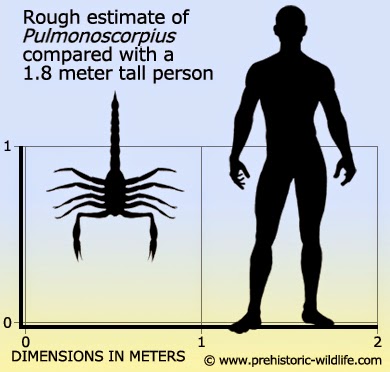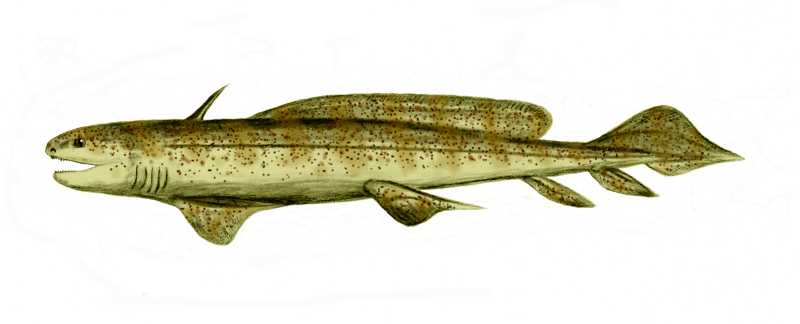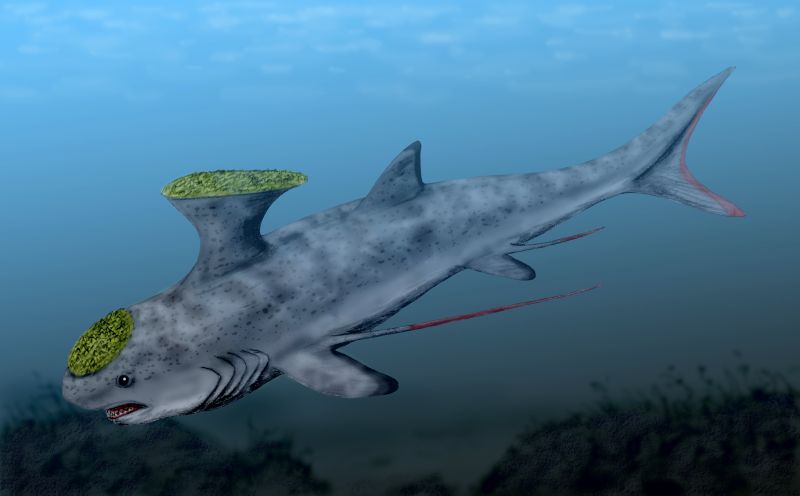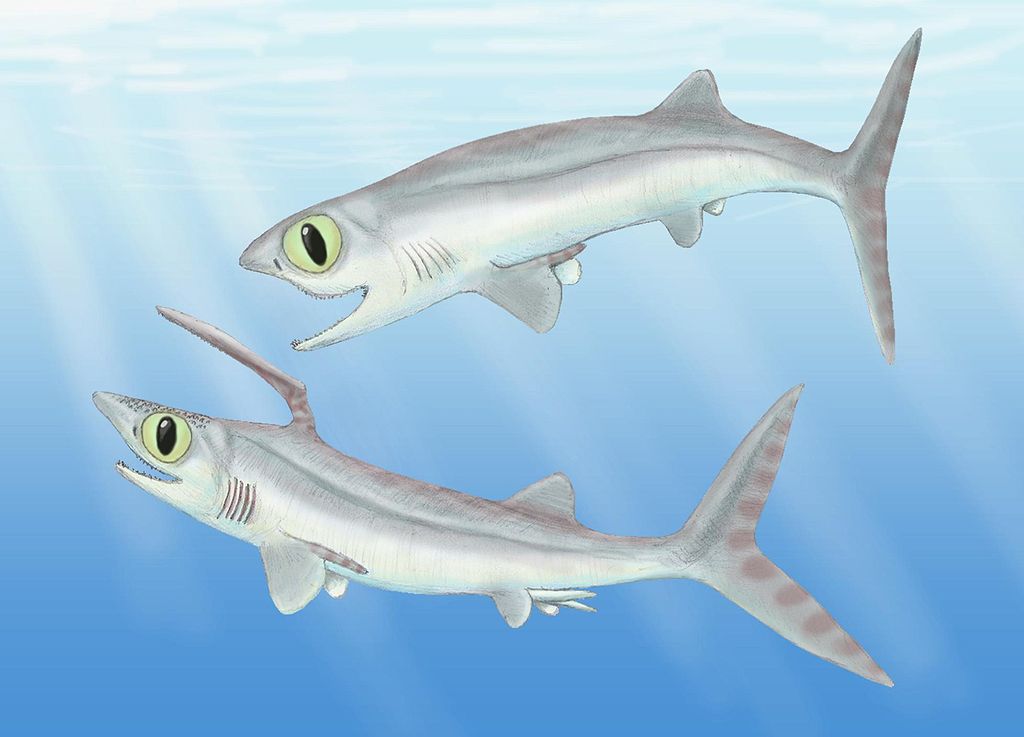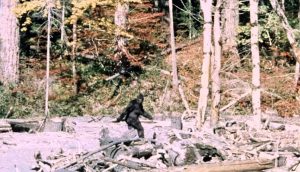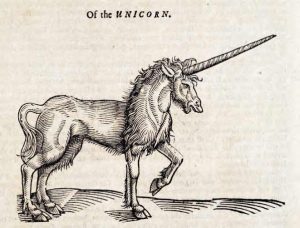History Of Life: The Carboniferous
Welcome to part five of my slow waltz through the epochs of life on earth. Today we tackle the Carboniferous age, named after the rich seams of coal left in the geological traces of the era. The Carboniferous marked the advent of huge insects, massive amphibians and the rise of the shelled egg.
If you want to recap before we start, here are links to the earlier stages:
The Carboniferous stretches from the end of the Devonian Period, about 358 million years ago, to the beginning of the Permian Period, about 298 million years ago.
By the Carboniferous period, land animals were well established. But, amphibians were the major players, so there was still heavy reliance on water; reptiles were yet to take centre stage. Arthropods, like Meganeura (more on him later), were common, and the land was covered in thick forests which would eventually die off and turn to coal.
Atmospheric oxygen was at an all time high during the Carboniferous, and the era witnessed the creation of mountains, as ancient land masses collided.
Early Carboniferous temperatures were pretty clement, around 20 degrees Celsius on average. Perfect for plant life to flourish. Although, later in the period this dropped down to around 12 degrees. Despite the warmth, the Carboniferous was much windier than today, this was for a couple of reasons. Firstly, the atmosphere was thicker, and secondly, there was an increased coriolis effect because the earth was spinning slightly faster than today (a day was just 22.4 hours long).
Plant life of the Carboniferous was similar to that of the preceding Late Devonian. Notably consisting of vine-like plants, horse-tails, ferns, scale trees and club mosses. Later on in the period, the number of plant species increased to include cycads, even more ferns and voltziales (extinct trees related to conifers).
Large trees including Equistales, Lepidodendrales and Cordaites stretched up to 30 metres into Carboniferous skies. Ferns were plentiful, some of which were all but identical to species we still have growing in our gardens today.
As for the oceans, the main characters were Foraminifera (amoeba-like creatures), corals, Bryozoa, Ostracoda (shrimp-like crustaceans), brachiopods (shelled sea creatures), ammonites (below), hederelloids (weird tubular critters), microconchids (similar to hederelloids) and echinoderms (like starfish and sea cucumbers).
The trilobites, which had been so dominant in previous eras, are now on the decline and whiling away the hours until they are finally taken by extinction.
Freshwater animals included some impressive monsters, like Hibbertopterus (below) a giant sea scorpion. Hibbertopterus was found in Scottish swamps in the Carboniferous and possibly reached up to 2 metres in length:
Insects
During the Carboniferous, as I mentioned above, the oxygen levels were much higher than they are today because of the high volume of plantlife. Oxygen made up 35% of the atmosphere’s gases, compared to today’s meager 21%. This had a surprising effect on life.
Arthropods (insects and the like) don’t breath through lungs, they have holes in their outer casings called spiracles which take in air. Rather than oxygen being pumped around the body as it is in mammals, any air that comes in has to get to the tissues through these holes in the surface.
The spiracle set up is fine if you are small and have little in the way of volume, but once you get bigger, the spiracle plan doesn’t work. An insect the size of an elephant, for instance, would not be able to get air from its skin to its dense core. This (thankfully) has kept insects to a reasonable size and stopped them from taking over the world. However, with the higher oxygen content in the carboniferous, some monsters were able to thrive.
The largest land invertebrate of all time graced the earth with its presence, the millipede-like Arthropleura:
A giant dragonfly called Meganeura – the largest flying insect of all time – also made an appearance. It had a wingspan up to 75cm. Imagine this getting caught in your hair:
Scorpions, like Pulmonoscorpius, grew up to 70cm in length:
Fish
As for fish, the sharks were still having a great time. The number of shark species exploded, possibly due to the decline and eventual extinction of placoderms (armoured fish) which thrived in the Devonian. These new shark species included the fresh water shark Xenacanthida:
This amazing radiation of shark species also threw up some oddities like Akmonistion:
…and Falcatus:
Amphibians were more numerous in the Carboniferous than they are today. They were also much larger, reaching up to 6 metres in some cases. Some Carboniferous amphibians had scaly skin, others had hard bony plates over their bodies.
This is the amphibian-like Pederpes, the most primitive Carboniferous tetrapod (four-legged creature):
Towards the back-end of the Carboniferous the rainforest system collapsed leading to a cooler drier climate. This hit the amphibians hard and they went into decline. Around this time, the reptiles learned a new trick – the amniote egg. An egg with a covering that wouldn’t dry out on land. This and other adaptations paved the way for their future success.
As with all good geological epochs, an extinction event is never too far away. The collapse of the Carboniferous rainforest systems had to come sooner or later. The cause of the collapse is presumed to be a drop in temperatures, intense glaciation and a decline in sea level. It was bad news for the amphibians but great for the reptiles who took their throne with joy.
The Carboniferous was a momentous era. It brought the largest of insects the earth has ever seen, it also produced, albeit indirectly, fried egg sandwiches.
MORE PREHISTORY:

